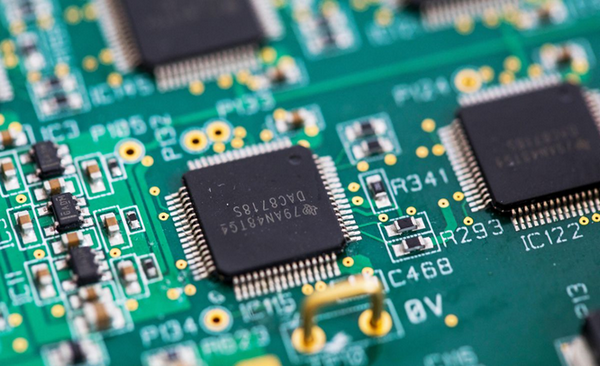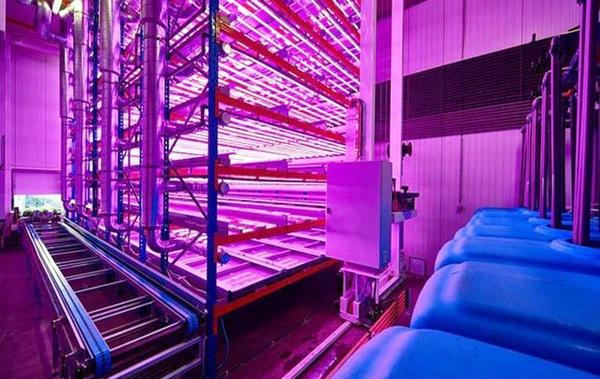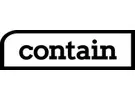COVID-19 has had an enduring, adverse impact on global supply chains. What started as a hand sanitizer and toilet paper shortage has evolved into a multifaceted supply chain breakdown affecting numerous manufacturing pipelines. At the heart of these disruptions is something small and unsuspected by those unaccustomed to tech design: semiconductor chips.
Semiconductor memory chips store data on computers and storage devices. They play a pivotal role in various technologies; everything from smartphones to cars to, you guessed it, container farms need semiconductors to function. A shortage of something this essential can upend the market as we know it and slow the pace of indoor agriculture’s growth.
Jumpstarted by pandemic mayhem, supply chain failures have become a consistent cause for concern for businesses across the globe. How has this issue become the norm in the current business landscape? Well, the answer comes down to simple economics: supply cannot meet demand.[1]

Source: CNET
Manufacturing these small chips requires more than one thousand steps, and COVID-19 has caused a perpetual surge in demand for certain technologies that use the chips--especially ones that connect us virtually, such as phones and webcams.[2] Another factor in the chip shortage is stockpiling. While car manufacturers cut production and procurement of chips during the height of the pandemic, other enterprises like Apple and Samsung began stockpiling the semiconductors, making it much harder to secure the commodity. [3] Industries that were not as proactive with procurement have felt the brunt of this and many other supply chain shortages.
Contain’s Head of Leasing & Vendor Relations, Doug Harding, commented on how supply chain shortages can impact financing in indoor agriculture:
"Where I see a possible problem within indoor agriculture is with possible delays in time of delivery. Some manufacturers are now quoting a much longer lead time on products, and lenders have a concern with the time of fulfillment which affects cash flow and overall risk. Longer production times due to shortages will cause longer delivery completion times. This almost certainly will make it a little tougher for start-ups that typically are not highly capitalized. Since this is a newer industry and very customized in approach, it would be more likely that product inventory is low and the low supply of semiconductors will be a factor in product delivery timing."
We spoke with one of our Contain vendors, Urban Crop Solutions, to gain insight into indoor agriculture’s response to these pervasive supply chain disruptions. Urban Crop Solutions creates automated controlled environment vertical farming systems and contracts its ongoing farming research. The company uses various automation components, including the semiconductor chip, within its container farms.
 Source: Urban Crop Solutions
Source: Urban Crop Solutions
To hedge against any supply chain disruptions, Urban Crop Solutions switched its manufacturing mentality from “just in time” inventory management to a “just in case” approach. The company’s suppliers stock 6-months’ worth of supply for critical components. Urban Crop Solutions credits its steady supplies, standard lead times, and stable costs to this action. “We were proactive,” said CEO Jean-Pierre Coene, “But it could have been a huge issue.”
Fortunately for vertical farming, there is a silver lining to all of this. The same supply chain shortages that are negatively impacting indoor agriculture are simultaneously making it more attractive to produce buyers. Restaurants and grocers alike seek supply that is closer to home to evade shipping delays and cost increases. Indoor farms allow produce buyers to bypass sections of the supply chain that may present these disruptions.
Although most understand that COVID primarily caused the supply chain shortage of semiconductors and other materials, it seems to be unclear when supplies will be back to "normal.” “Nobody has a crystal ball, but we do see that the issue the supply chain is facing is not resolved,” said Coene. “Urban Crop Solutions hopes the summer recess will correct pricing and lead times.”

Sources used:
[1] https://www.nationaldefensemagazine.org/articles/2021/5/21/semiconductor-shortage-shines-light-on-weak-supply-chain
[2] https://time.com/6075425/semiconductor-chip-shortage/
[3]https://hbr.org/2021/02/why-were-in-the-midst-of-a-global-semiconductor-shortage
